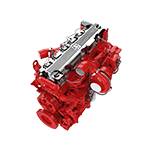फेब्रुवारी . 12, 2025 12:42 Back to list
Mitsubishi Lancer Rear Drum Brakes
Removing a seized brake drum can be a challenging task, especially for those new to automotive repairs. Achieving success in this endeavor requires patience, the right tools, and a cautious approach to avoid damage to the brake system components. This article provides a detailed guide based on expert advice and tested techniques to remove a seized brake drum efficiently and safely.
2. Gentle Tapping Using a rubber mallet, gently tap around the perimeter of the brake drum to loosen it. Avoid using a metal hammer as it can damage the drum. The goal is to create vibrations that help release the drum from the hub. 3. Back Off the Brake Adjuster If the brake shoes are gripping the drum too tightly, locate the adjuster access hole on the backing plate. Using a flathead screwdriver, turn the adjuster wheel to retract the shoes until the drum moves freely. 4. Use a Drum Puller For extremely stubborn drums, a drum or hub puller may be necessary. Secure the puller to the drum using the provided bolts and gradually tighten the center bolt. The puller will exert force to pull the drum off the hub. Proceed carefully to avoid damaging the components. 5. Heat Application In cases where traditional methods fail, applying localized heat to the drum using a heat gun may expand the metal enough to release it. Be cautious not to overheat, which can warp the drum or affect nearby components. Final Steps and Inspection Once the brake drum is successfully removed, inspect all components for wear and damage. Pay attention to the condition of the brake shoes, springs, and wheel cylinder. Replace any worn or damaged parts to ensure optimal brake performance. Reinstallation tips Clean the hub surface to remove any rust or debris before reinstalling the drum. Applying anti-seize lubricant to the hub can prevent future seizing. Align the drum carefully and secure it with the wheel, ensuring all lug nuts are tightened in a crisscross pattern to distribute pressure evenly. Conclusion Successfully removing a seized brake drum requires a combination of patience, methodical techniques, and the right tools. By following these expert tips, you can tackle this common automotive challenge with confidence. Regular maintenance and inspections are crucial in preventing seizing and ensuring the longevity of your vehicle's brake system. Always remember to prioritize safety throughout the process to protect yourself and your vehicle components.


2. Gentle Tapping Using a rubber mallet, gently tap around the perimeter of the brake drum to loosen it. Avoid using a metal hammer as it can damage the drum. The goal is to create vibrations that help release the drum from the hub. 3. Back Off the Brake Adjuster If the brake shoes are gripping the drum too tightly, locate the adjuster access hole on the backing plate. Using a flathead screwdriver, turn the adjuster wheel to retract the shoes until the drum moves freely. 4. Use a Drum Puller For extremely stubborn drums, a drum or hub puller may be necessary. Secure the puller to the drum using the provided bolts and gradually tighten the center bolt. The puller will exert force to pull the drum off the hub. Proceed carefully to avoid damaging the components. 5. Heat Application In cases where traditional methods fail, applying localized heat to the drum using a heat gun may expand the metal enough to release it. Be cautious not to overheat, which can warp the drum or affect nearby components. Final Steps and Inspection Once the brake drum is successfully removed, inspect all components for wear and damage. Pay attention to the condition of the brake shoes, springs, and wheel cylinder. Replace any worn or damaged parts to ensure optimal brake performance. Reinstallation tips Clean the hub surface to remove any rust or debris before reinstalling the drum. Applying anti-seize lubricant to the hub can prevent future seizing. Align the drum carefully and secure it with the wheel, ensuring all lug nuts are tightened in a crisscross pattern to distribute pressure evenly. Conclusion Successfully removing a seized brake drum requires a combination of patience, methodical techniques, and the right tools. By following these expert tips, you can tackle this common automotive challenge with confidence. Regular maintenance and inspections are crucial in preventing seizing and ensuring the longevity of your vehicle's brake system. Always remember to prioritize safety throughout the process to protect yourself and your vehicle components.
Latest news
-
High-Quality Trailers for Towing Needs | Shop Now
NewsJul.25,2025
-
Premium MAN Shaving Kit for Effortless Comfort
NewsJul.25,2025
-
HINO Advanced Machinery Solutions - LONGYAO COUNTY YIHANG MACHINERY | Industrial Efficiency&Customization
NewsJul.21,2025
-
HINO Machinery Solutions - LONGYAO COUNTY YIHANG MACHINERY MANUFACTURING CO.LTD | Precision Engineering, Customizable Configurations
NewsJul.21,2025
-
HINO Machinery Solutions - LONGYAO COUNTY YIHANG MACHINERY MANUFACTURING CO.LTD | Precision Engineering, Customizable Configurations
NewsJul.21,2025
-
HINO Machinery Solutions - LONGYAO COUNTY YIHANG MACHINERY MANUFACTURING CO.LTD | Precision Engineering, Customizable Configurations
NewsJul.21,2025
